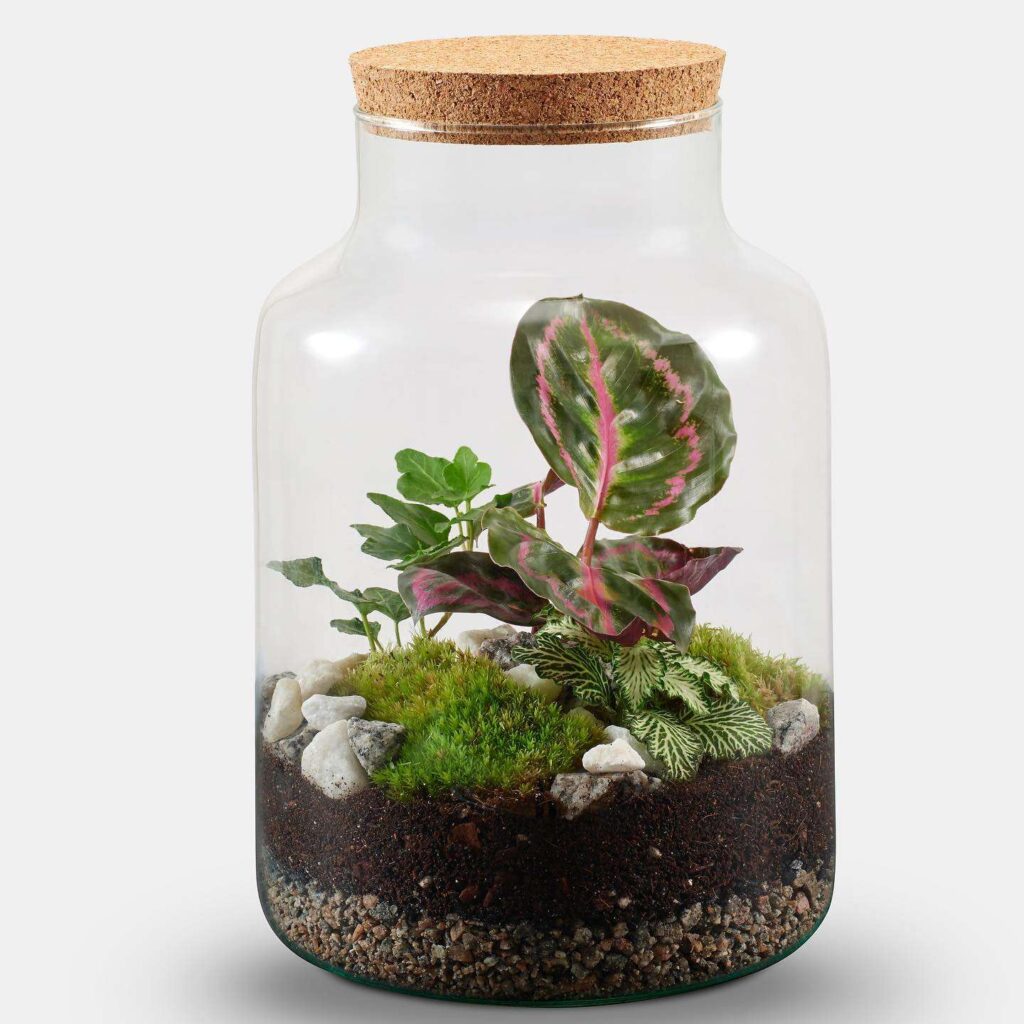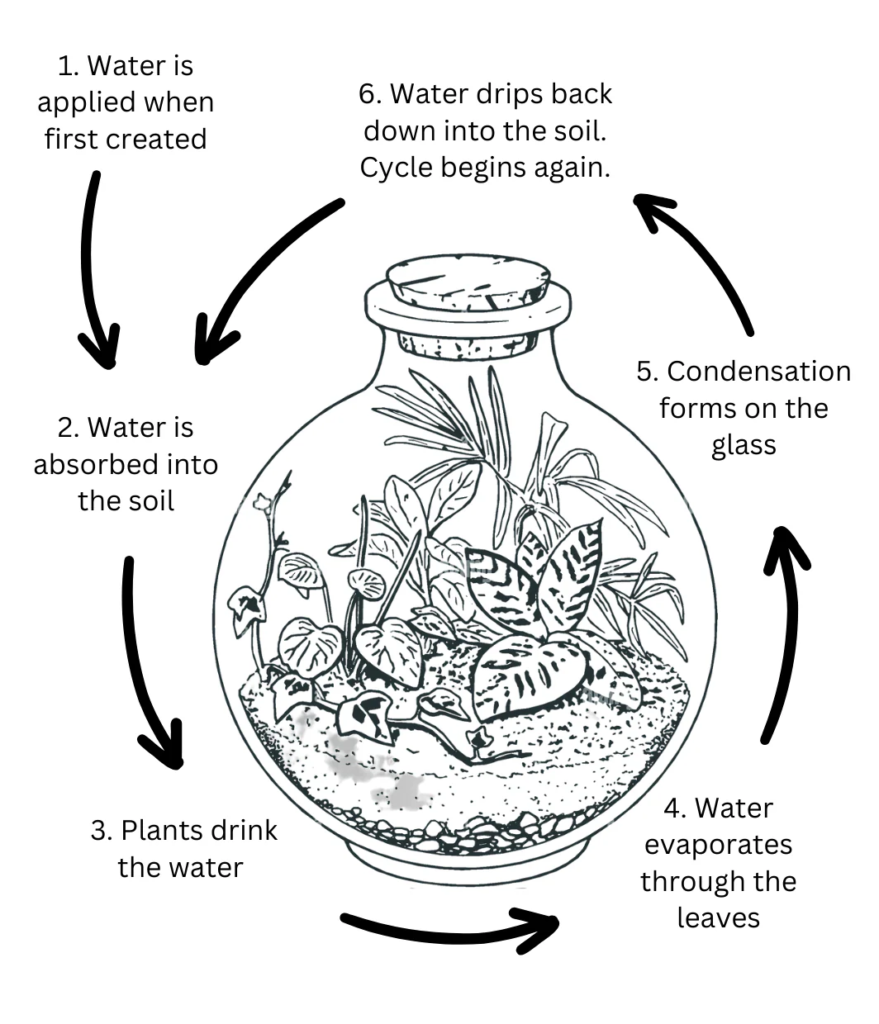
What is a terrarium?
A terrarium is essentially a self-contained ecosystem, a miniature garden housed within a glass container. The word itself is a combination of “terra” (Latin for earth) and “arium” (Latin for container). This small-scale environment can range from a simple jar to a complex, multi-tiered display.
Types of Terrariums
There are two primary types of terrariums:
- Closed Terrariums: These are sealed environments that create their own microclimate. The plants within recycle water and oxygen, making them relatively low-maintenance. They require careful balance and are best suited to specific types of plants, but once set up, they will essentially look after themselves, with minimal input.
- Open Terrariums: These terrariums are open to the environment, allowing for more air circulation. Because of this, they do offer slightly more flexibility in plant choice, but will require a bit more maintenance and watering from time to time.
The Magic Inside a Closed Terrarium
Terrariums are more than just pretty containers. They offer a glimpse into the wonders of nature. The enclosed environment fosters a unique balance between plants, soil, and humidity. With proper care, a terrarium can thrive for years, becoming a focal point in any room.

Terrariums are miniature ecosystems that mimic the natural world. They rely on the basic water cycle to thrive. Water from the soil and plant leaves evaporates into the air within the terrarium. The water vapour then condenses on the inside of the glass container. The condensed water droplets then form and fall back to the soil, completing the cycle.
So, intrigued by the idea of creating your own terrarium? Keep an eye out for our next posts, where we’ll dive into the steps involved in building your miniature garden paradise.

